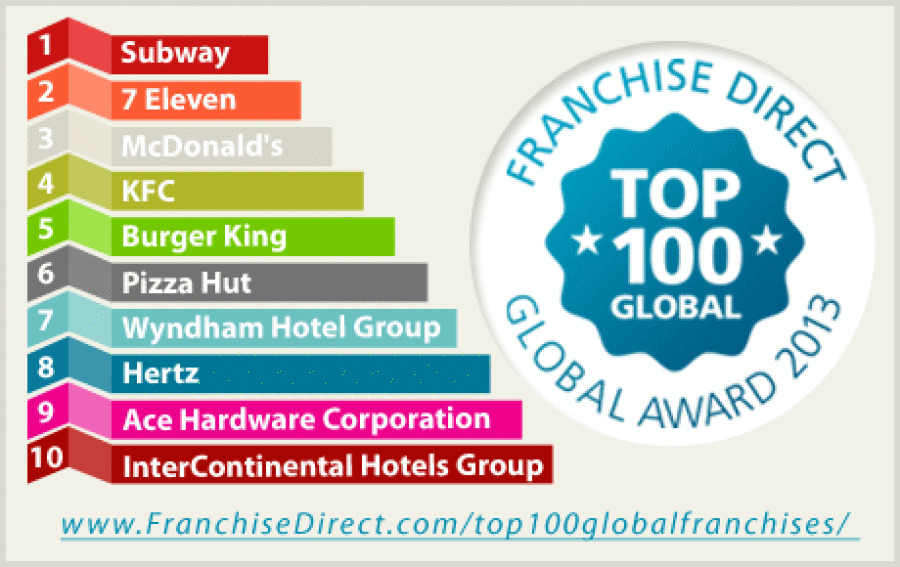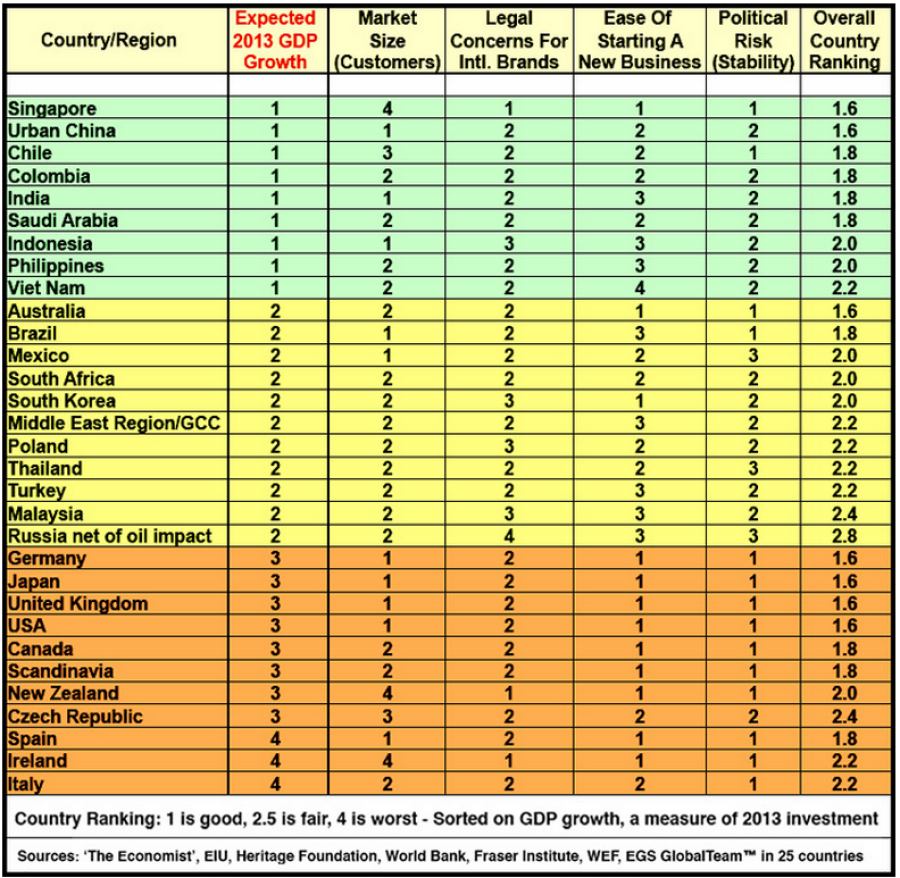It is commonly agreed that the inception of the modern franchise industry in the US by Isaac Singer is the reason why US-based companies still dominate the List of Top 100 Global Franchises today. However, it seems that the number of companies in the ranking that are based outside of the US is increasing.
00000183-7fc1-d8af-afbf-7fc3c6ec0000
Franchise Direct’s annual Top 100 Global Franchises Report is an objective one, eagerly anticipated. Months are spent compiling and verifying information on over 5,000 active franchises, using data taken from reliable sources such as franchise disclosure documents, self-reported company statistics and Securities and Exchange Commission filings. Criteria for ranking include system size (number of units), sales revenue, growth and franchise support and training. Franchises are judged regardless of their country of origin.
European Franchises
This is the fifth report, and as franchising has been increasing in popularity around the world, the overall percentage of companies not based in the US has risen from 14% in 2009 to 18% this year. The main increase is in Europe (4% to 9%), particularly in France, a country which saw no companies in the Top 100 ranks in 2009 or 2010 but now has four (Europcar, Yves Rocher, 5àSec and Carrefour); the highest of any European country. The expansion to note is Carrefour, which last year was not even in the Top 100 and this year ranks at #13. Now the second-largest retailer in the world and the largest in Europe, the group operates four main grocery store formats: supermarkets, cash and carry, hypermarkets and convenience stores.
Non-US-based companies:
00000183-7fc1-d8af-afbf-7fc3c6ed0000
The Top Ten Franchises
Most of such drastic movements in the ranking did not occur at the very top, with only one non-US company in the Top 10. The UK-based InterContinental Hotels Group just peeks in at #10 behind the usual US fast food and convenience franchises such as McDonald’s, Burger King, KFC, Pizza Hut, 7-Eleven and Subway, all of which were in the Top 10 last year and the last of which has been the top franchise on the list since 2011.

These companies are ideal role models for early-stage franchises looking to expand their business. They all share successful elements such as clear business plans, strong training and support and the ability to adapt to ever-changing social and economic conditions – Subway, for example, has been using advanced technology to interact with potential franchisees and experimenting with recruiting the next generation of franchise owners through an online ‘business simulation’ game. However, it is possible that all the US places where food is sold are shortly going to be facing challenges. 2012 was the warmest US year on record and the consequential drought will have effects on the availability and price of essential commodities such as corn, soybeans and cheese.
Where Next?
International franchises are constantly searching for the next possible location where their concept will thrive. So what of developing nations such as India and China where the middle class economies are growing? In these countries US exports are becoming increasingly welcome and this will help US franchises to expand further. Edwards Global Services has ranked the franchising potential of a number of countries around the globe, taking into account several factors important for the health of a franchise venture:

Ranked near the top of the list are two countries within a region that is seemingly one of the next big areas in franchising development – Latin America, an area that businesspeople of all industries have been keeping an eye on for some time now and that inspired the Latin American Trade Mission last year.
Conclusion
There is no doubt that at 82%, the US-based companies still dominate global franchising and will continue to do so for many years. Such beautifully constructed systems have the ability to be culturally sensitive, to dismantle trade barriers and to grow in promising foreign markets in Asia and Latin America. But if companies from other countries continue to take ladder space at this rate of 4% per 5 years, well then…50 years or so should do it.














